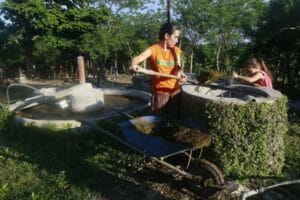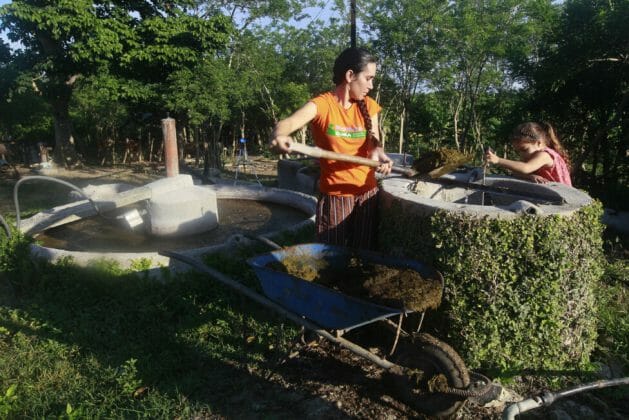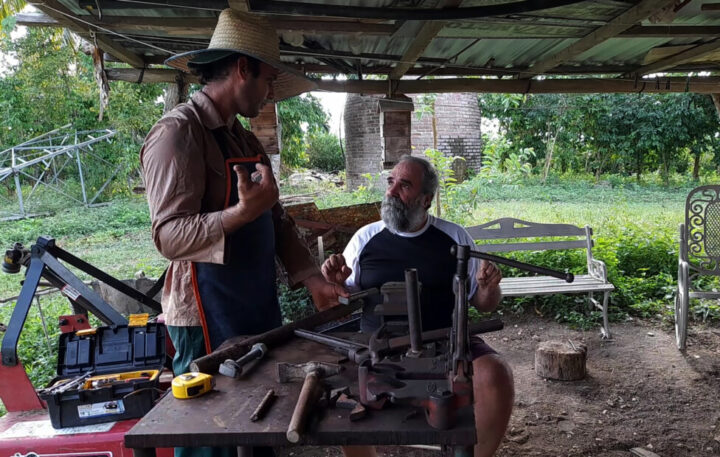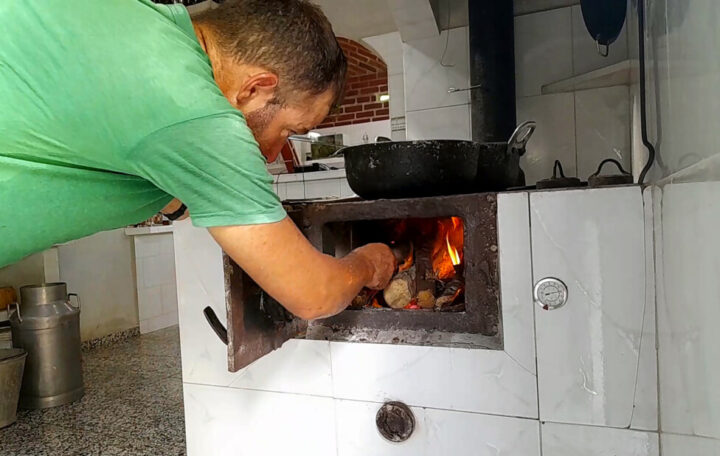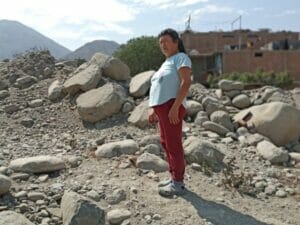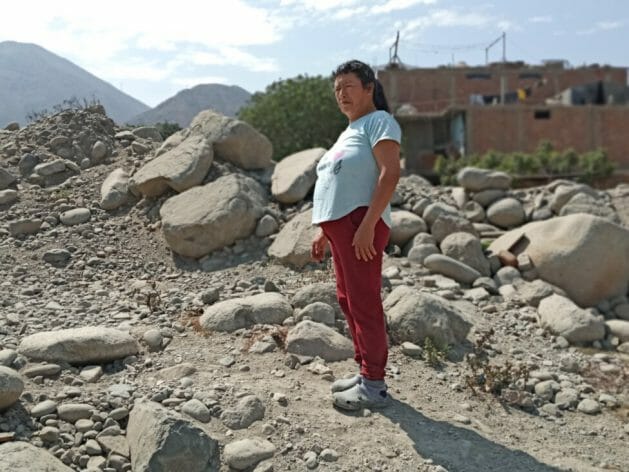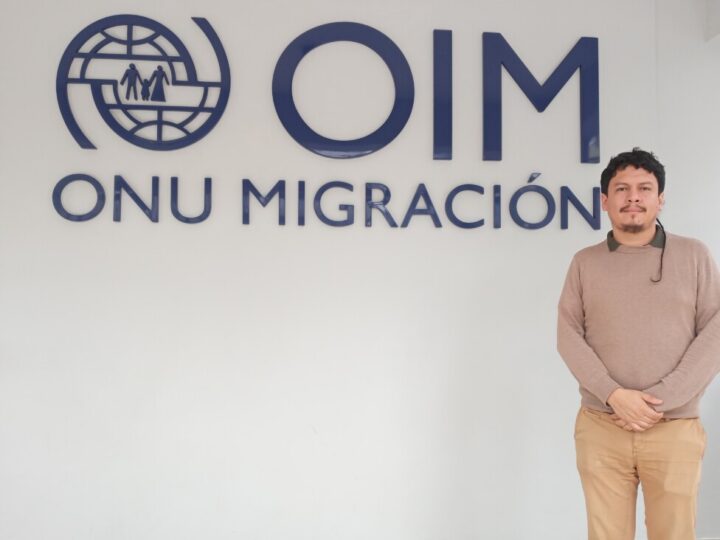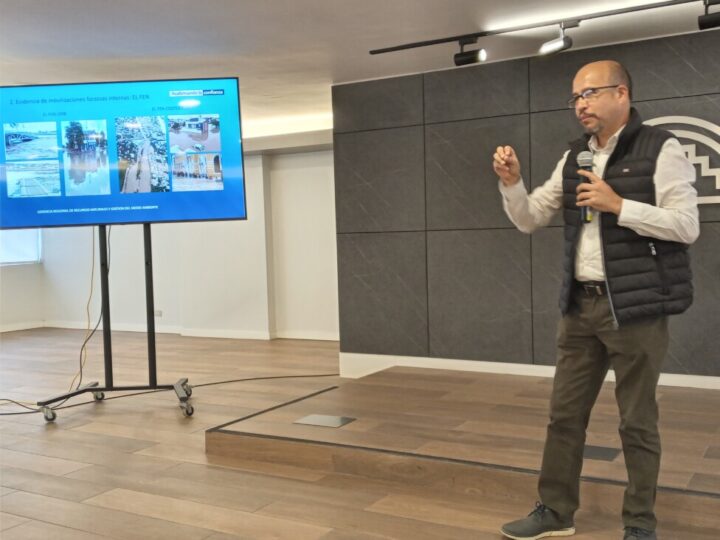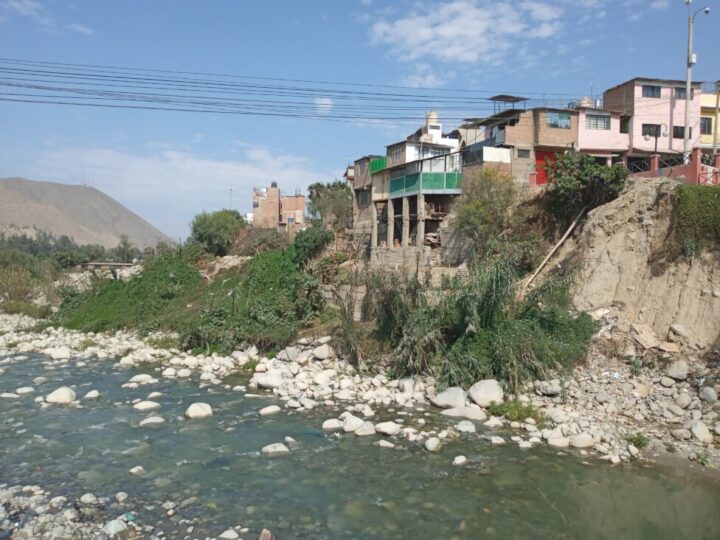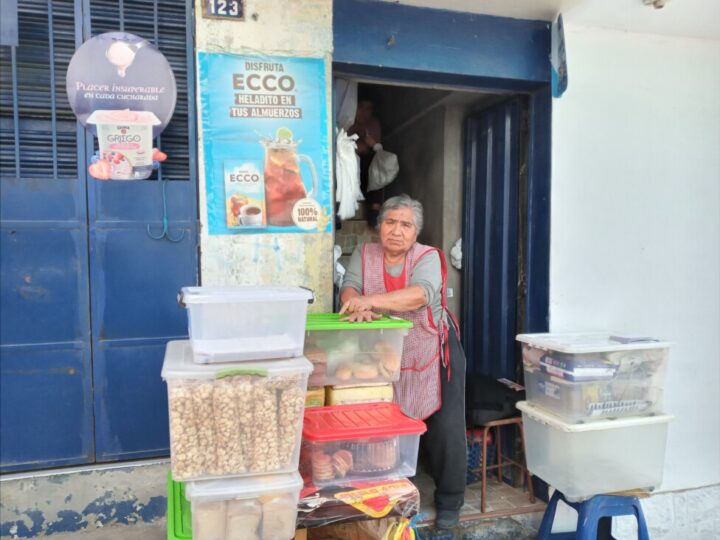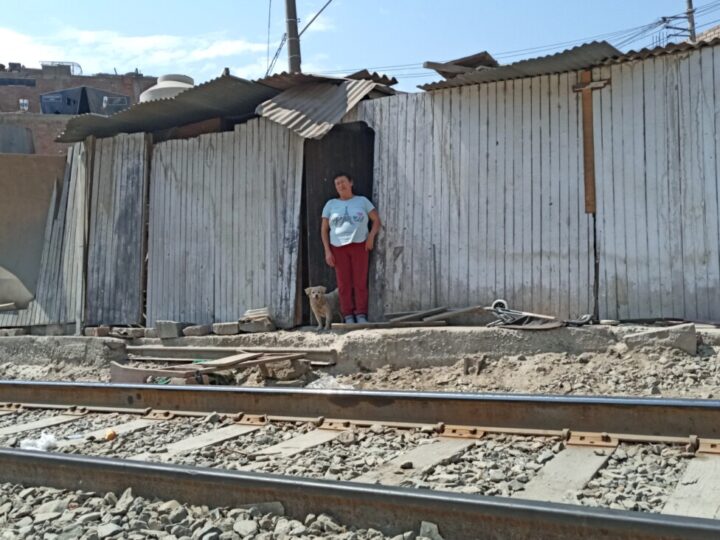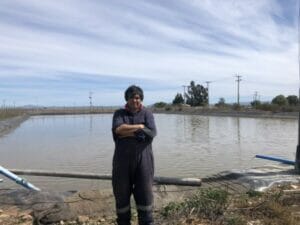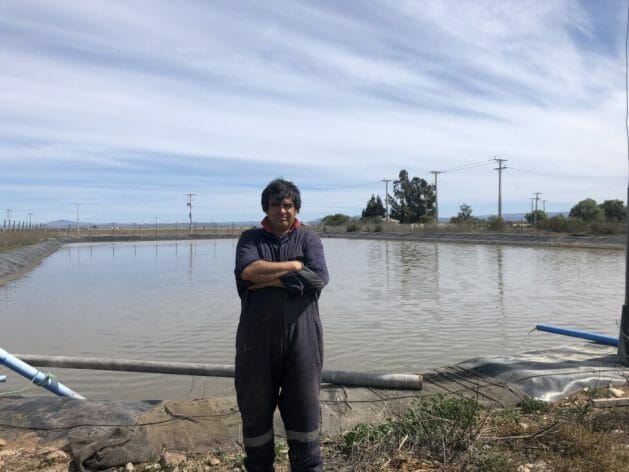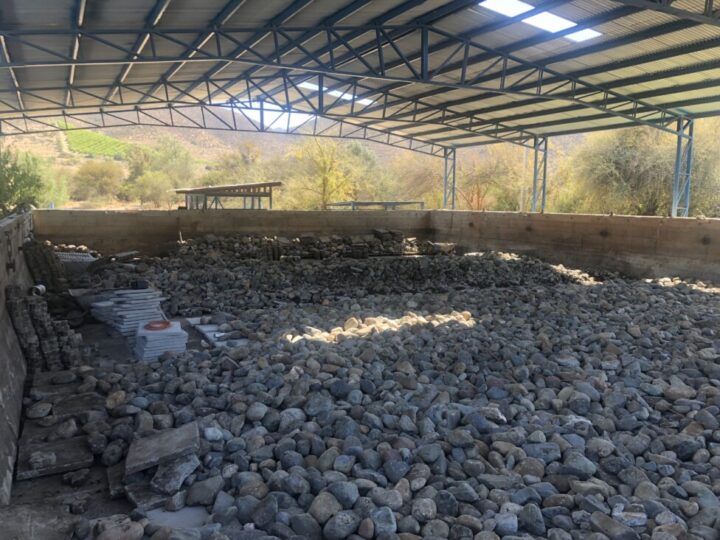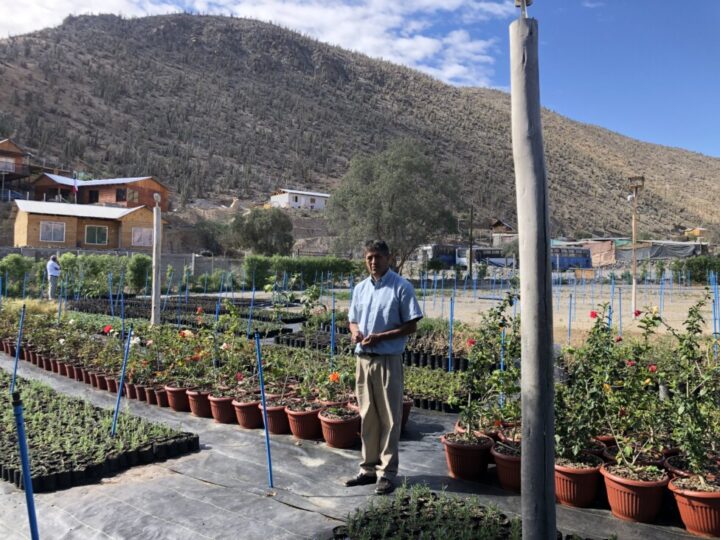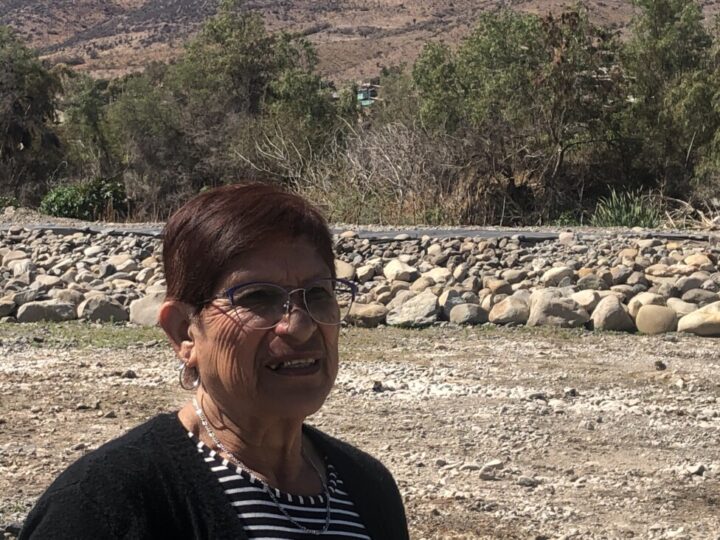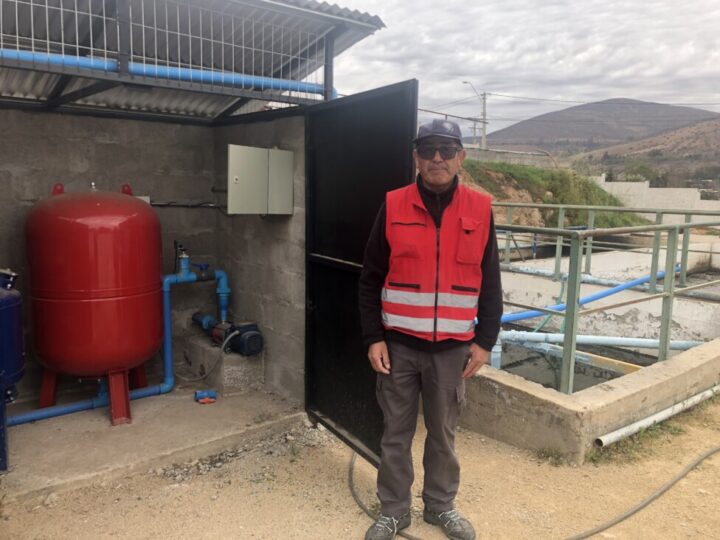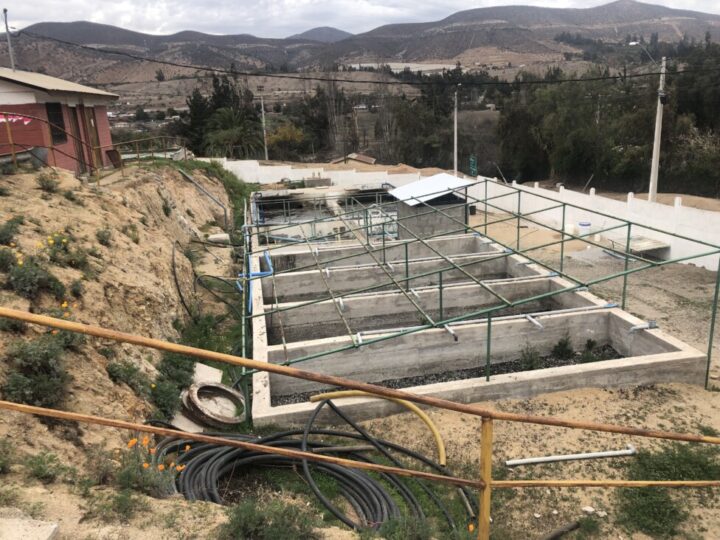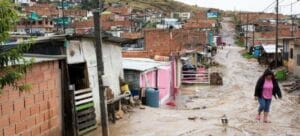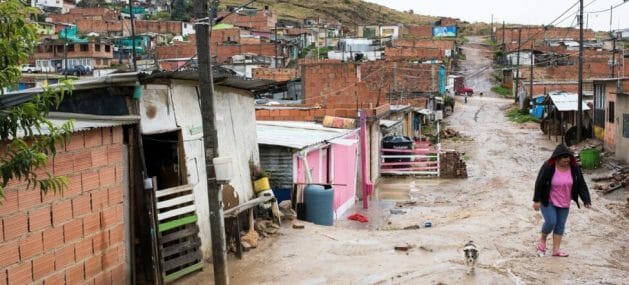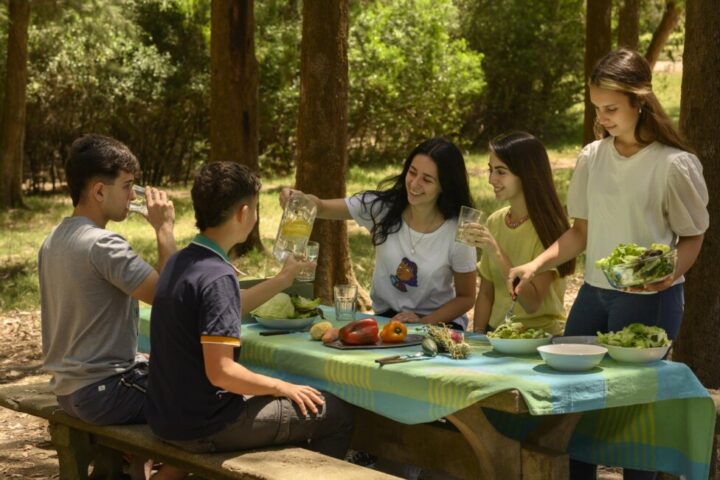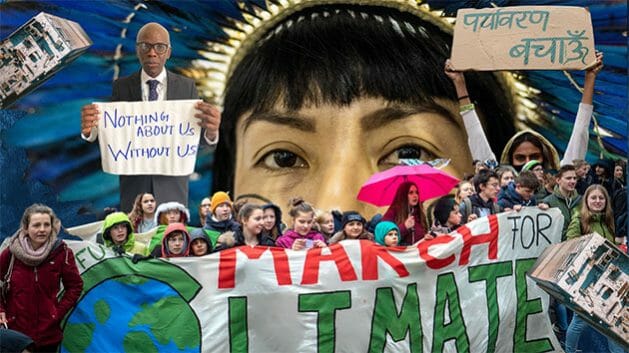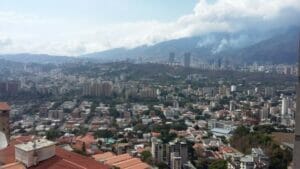
Civil Society, Development & Aid, Economy & Trade, Editors’ Choice, Featured, Financial Crisis, Headlines, Human Rights, Humanitarian Emergencies, Latin America & the Caribbean, Migration & Refugees, Population, Poverty & SDGs, Regional Categories, TerraViva United Nations
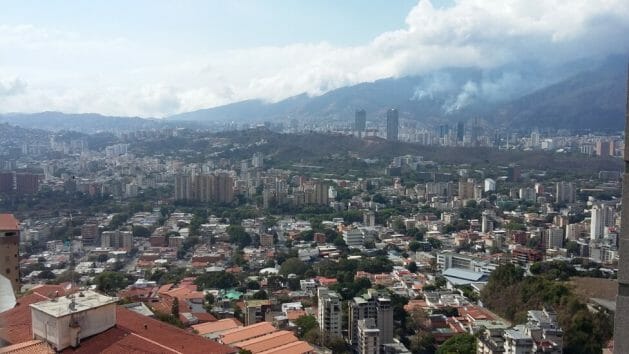
A view of Caracas from the south side of the narrow valley where it sits, dotted with houses and residential buildings where full occupancy was the norm until a few years ago. As a result of the massive migration of young people and adults, more and more homes are left unoccupied or inhabited only by the elderly and young children. CREDIT: Humberto Márquez / IPS
– Gladys swore she would not cry in front of her small children, but she still had to wipe away a couple of tears when she turned her head and looked, perhaps for the last time, at her dream house on Margarita Island in Venezuela, from where she migrated, driven by a lack of income and by fear.
“It hurts to leave your own home, the most precious material asset for a family like ours (she works in administration, her husband is a mechanic, and they have two boys), but we lost our jobs and were robbed in broad daylight in the middle of the city. That led us to decide to emigrate,” she told IPS from Miami, Florida in the U.S.
Due to the economic, social and political crisis, which gave rise to a complex humanitarian emergency, 7.7 million Venezuelans, according to United Nations agencies, have migrated from this country, the vast majority in the last decade, and the flow is not slowing down, especially to other countries in the region.
“It hurts to leave your own home, the most precious material asset for a family like ours, but we lost our jobs and were robbed in broad daylight in the middle of the city. That led us to decide to emigrate.” — Gladys
The family of Gladys, who like other people who talked to IPS preferred not to give her last name, tried their luck in Colombia, Panama and Spain, before finally settling in the United States, “and the worry about the house followed us like a shadow, but fortunately we made a deal with an enterprising young man who takes care of it, improves it and pays a modest rent.”
There are thousands like her. Migrants try not to leave their homes empty and abandoned, because they could lose them. For this reason, since most migrants are adults in their most productive age and young people, relatives of other ages remain in the homes, giving Venezuela the appearance of being a country of elderly people and children.
“I have to close up my home,” said Juan Manuel Flores, from San Antonio de Los Altos, a satellite city of Caracas with many middle class houses. “The neighbors will take care of it. It took us more than five years to build it and it cost between 150,000 and 200,000 dollars. Now I can’t get more than 60,000 dollars for it. We are not just going to give it away for that price.”
Flores, a teacher at a school where he earns less than 200 dollars a month, is preparing to travel to Spain, where his wife and adult daughters have gone ahead of him. “I will return to Venezuela when the country and its economy improve, and housing prices will rise again,” he told IPS, although without much conviction.
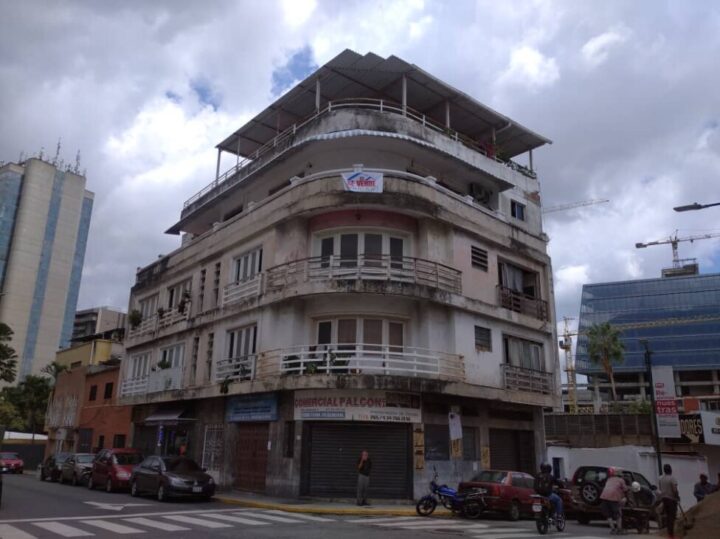
Solitude eats away at houses and buildings even in sought-after areas of the residential and commercial municipality of Chacao, in eastern Caracas. The real estate and construction market is suffering in Venezuela from the general economic crisis and in particular from the oversupply of housing created by those leaving the country. CREDIT: Humberto Márquez / IPS
Why not rent out their house? “Because the laws and the authorities always favor the tenant, and if they have children it is impossible to get them out when the lease is up, whether they pay the rent or not, and they end up staying in the house for years,” said Nancy, a pastry chef, also from San Antonio, who left a niece in charge of her apartment when she moved to Brazil last year.
A survey of migrants in Colombia, Ecuador and Peru, released in October 2022 by the Interagency Coordination Platform for Refugees and Migrants in Venezuela (R4V), led by United Nations agencies, showed that only 23 percent considered the homes they left behind in their country to be safe.
Selling is also not an option in most cases, because the magnitude of the exodus over the last decade has so depressed demand that the most that can be obtained for a property is 15 or 20 percent of the value it had 15 years ago, if you are lucky. So selling a home even if you want to is a long, difficult process that provides meager results.
Those who have no other choice say that they are not selling their home but “giving it away” for whatever they can get, with great regret, mostly to internal migrants from other parts of the country, who “take refuge” in Caracas because outside the capital there are recurrent power outages, and scarcity of water and fuel, in addition to other shortages.
“Real estate deteriorates, ceases to serve those who need it and remains an important asset that produces nothing for the owner, for example a migrant who needs to pay rent as soon as they arrive in another country,” Roberto Orta, president of the Venezuelan Real Estate Chamber, told IPS.
The businessman said “this is an issue that, we have proposed, should be addressed with political will in order to reform the laws that constrain the real estate market, to benefit both landlords and tenants. Up to 250,000 homes could be freed up in five years.”
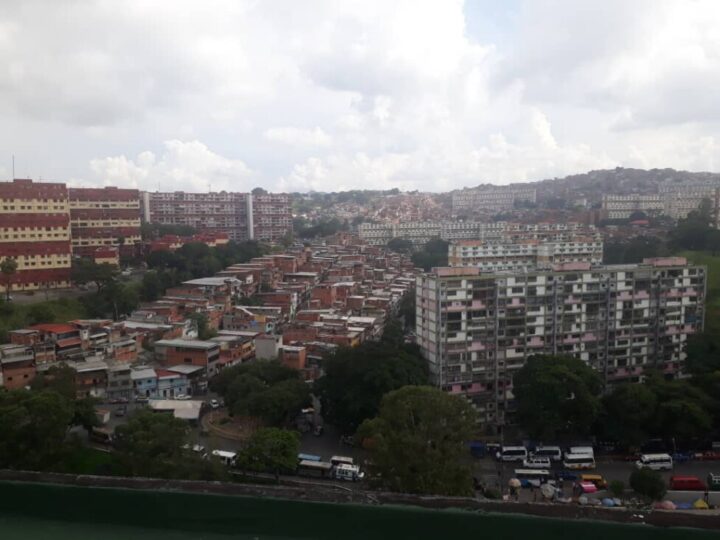
A view of the working-class neighborhood of 23 de Enero on the west side of Caracas. In low-income barrios, closed, empty houses are almost non-existent, as those who decide to emigrate look for relatives to move in, to avoid the risk of the homes being invaded or robbed. CREDIT: Humberto Márquez / IPS
A trade is born
In the residential buildings located in Caracas and other cities, closing up an apartment and moving outside the country is not the same as leaving a house abandoned to solitude and neglect, because the neighbors, for their own safety and in order to pay the common expenses, keep watch and take care to prevent strangers from occupying the empty apartments.
But houses, especially middle-class homes, are an attractive and easy target for crime and even for people who want to occupy them by de facto means. That is why a new profession has appeared: the home caretaker.
“I have taken care of three houses in housing developments in the southeast (of Caracas), it’s the way I make ends meet,” said Daniel, who also works as a self-employed gardener. “I would go to one house twice a week, three times a week to another, and every day to another.”
He explains that in the last house “the owners were Portuguese business owners who went away and left three dogs. I would go to a pet food store to pick up the food, feed the dogs, check around the house and that was it.”
Family friends of the owners have now taken charge of the dogs and Daniel no longer receives payment for taking care of them. “I don’t have an account in dollars, I was paid through a restaurant friend of the owners, who does have an offshore account,” he said.
To pay for caretakers from abroad, intermediaries are indispensable, since in Venezuela, whose currency has been made nearly worthless by the economic crisis, there is a de facto dollarization, without agreement from the U.S. authorities, who also use sanctions to block the transactions of government bodies.
Daniel is saving up to join one of the groups forming in Antímano, the working-class neighborhood where he lives in the southwest of the capital, to migrate as well. He said that “I didn’t leave a few weeks ago because I hadn’t sold my motorcycle yet, otherwise right now I would be in the Darien,” the dangerous jungle between Colombia and Panama that thousands of migrants cross every day.
A more successful caretaker is Arturo, who is in charge of two houses with large living rooms, corridors, yards, a swimming pool and parking area. He is paid a modest fee to care for and maintain the homes, but is authorized to rent them out for social gatherings and parties.
“In both cases the owners are people with good incomes, they left with their children to study abroad and plan to return in a few years if conditions in the country change. They would like to find their homes as they left them,” he said.
When he rents out the property for a day or a night, guests can use the yards, swimming pool and even awnings, tables and chairs. But Arturo closes off access to the more private parts of the house and hires assistants to watch out for damages or disturbances. “I live well, I keep up the houses and each one brings me about 3,000 dollars in profits per month,” Arturo said.
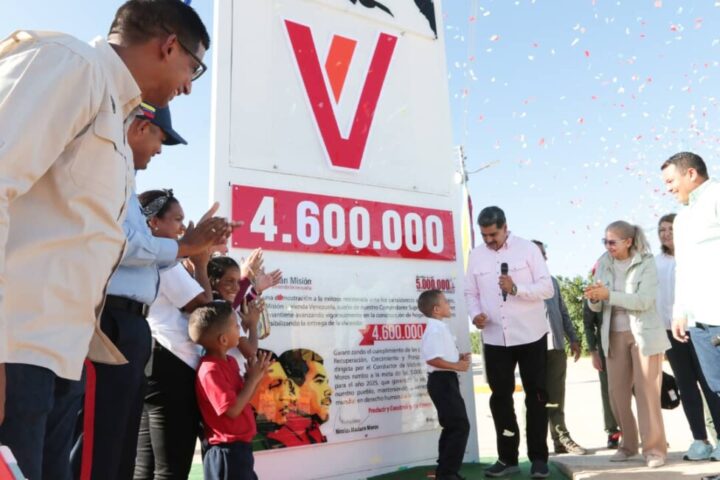
President Nicolás Maduro delivers a batch of houses in the northwestern state of Falcón, which form part of the 4.6 million homes that the government claims to have built and provided to Venezuelan families since 2013. The figure is questioned by organizations dedicated to monitoring economic and social rights. CREDIT: Minhvi
No empty houses in the shantytowns
In the shantytowns of the cities and towns of this country – which has a population of 33.7 million according to government figures and 28 million according to university studies – the situation is different and there are hardly any empty or unoccupied houses.
“In the shantytowns, no house is left empty. The very next day someone can invade it, occupy it, or take what is left inside by those who left, furniture or household goods. Someone stays in charge, the grandfather or in-laws, a trusted neighbor, or a relative is brought from the interior of the country,” explained Alejandra, from the Gramoven area.
She lives in a shantytown of informally constructed dwellings in the northwest of Caracas, similar to the ones that cover most of the many hills and hollows occupied by the capital’s most disadvantaged inhabitants.
“Many people leave, the young people emigrate, my children want to leave through the Darien jungle. But nobody leaves their house empty. If you do, you lose it,” Alejandra said.
In Santa Bárbara del Zulia, on the hot plains south of western Lake Maracaibo, “the situation is the same,” Julio, a bricklayer who migrated to Colombia for four years and has returned to care for his elderly parents, told IPS.
“You can’t leave your house alone in these towns,” said Julio. “When my parents went to Maracaibo and Caracas for medical treatment, they went and came back quickly, because the Community Council warned them not to leave their house empty for too long, because they would not be able to ward off people who wanted to occupy it.”
The Community Councils are committees set up by the government to represent and manage community affairs – such as the distribution of bags of subsidized food to poor families – and they channel decisions by the government.
“But people are leaving anyway. It’s something that won’t stop as long as people here earn only a pittance and can’t even eat properly (the minimum wage and official pensions in Venezuela are equivalent to four dollars a month). People care about their houses, but food has to come first,” said Julio.
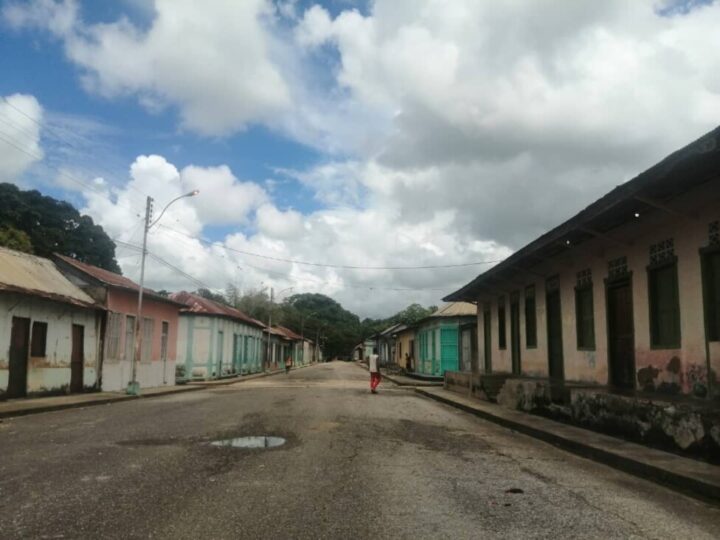
View of a row of houses practically abandoned by most of their inhabitants in a town in eastern Venezuela. Migration from the countryside and small towns to large cities and oil producing areas marked the 20th century in Venezuela. And today, migration from this country mainly to other Latin American nations has become a regional crisis. CREDIT: VV
A matter for the government and the business community
While the plight of people leaving their homes continues to drag on, the government of President Nicolás Maduro announces more or less twice a year the construction of hundreds of thousands of new homes, in a program initiated by his late predecessor Hugo Chávez (1999-2013), called “Venezuela’s Great Housing Mission”.
According to official figures, since 2011, 4.6 million homes have been built and delivered by the Mission, mostly residential complexes to which the president goes to personally hand over the keys of one or more houses to their new inhabitants.
In accordance with the Mission, the occupants are tenants, not owners, so they cannot sell the homes. If they leave, the home can be reassigned to new tenants. To avoid this, those who choose to move to another city or country first look for relatives who can move into the house, and thus keep it.
However, the official figures on the number of homes built is not borne out by anecdotal evidence, to judge by the myriad of informal self-built houses still occupied in the slums, and by reports from business and civil society organizations.
The Chamber of Construction reports that the sector has decreased 96 percent in the last 10 years, and that its members employ 20,000 workers, down from 1.2 million in better times, while cement companies are working at 10 percent of their capacity and the steel industry at seven percent.
The civil society organization Provea, which specializes in the study of economic, social and cultural rights, has compared and contrasted the figures of the Housing Mission – which have not been audited, according to Provea – with independent studies, and reached the conclusion that the government has built and delivered only 130,856 housing units in 10 years.
In 1955 the Venezuelan writer Miguel Otero Silva (1908-1985) published his famous novel “Casas Muertas” (Dead Houses), describing the decline of Ortiz, a town in the central plains, caused by the loss of its population due to malaria and emigration to the big cities and oil production centers.
The flow of Venezuelan emigration in this century has not been enough to turn this into a country of dead houses. But its many closed doors bear witness to a collapse that has pushed millions of its inhabitants abroad, as do the small number of lights that are lit at night in the buildings of Caracas and other cities.

